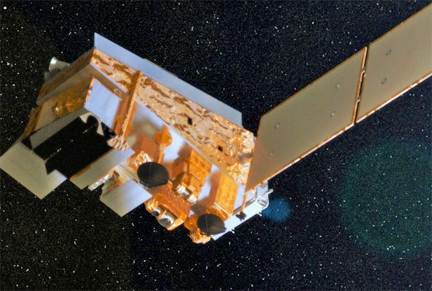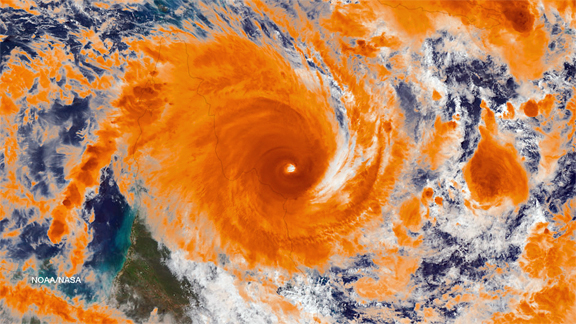
[SatNews] The NOAA/NASA Suomi NPP satellite is now the primary operational polar-orbiting spacecraft for NOAA’s operational weather forecasting mission.

Artist's concept of the Suomi NPP satellite in space.
Image credit: NASA/Goddard Scientific Visualization Studio/Ryan Zuber
The National Weather Service (NWS) uses Suomi NPP data in its numerical weather prediction models. Observations from the satellite are improving the accuracy and extending the range of global forecasts three to seven days in advance of significant weather events, including hurricanes and winter storms. Suomi NPP has priority within the day-to-day operations of NOAA’s Satellite and Information Service (NESDIS) and replaces NOAA-19 as the primary satellite. NOAA-19 will remain a critical part of NOAA’s polar constellation and provide valuable contributions to NWS forecasts. Designating new satellites as primary is a regular part of NESDIS’ satellite lifecycle. As a new satellite and instruments become available and are proven, they rise to the primary position.
"The sounding sensors on the Suomi NPP satellite provide data that extend the legacy of previous operational and research satellites to support operational medium-range numerical weather prediction (NWP) modeling," said Dr. William Lapenta, Director of NOAA’s National Centers for Environmental Prediction. "Suomi NPP data will facilitate future NWP improvements as models and data assimilation techniques are advanced."

The VIIRS instrument on the Suomi NPP satellite captured this image of Tropical Cyclone Ita near Cape Flattery, Queensland, Australia on April 11, 2014.
Image Credit: NOAA
Suomi NPP is part of NOAA's next generation Joint Polar Satellite System (JPSS) constellation of polar-orbiting environmental satellites. These satellites gather global measurements of atmospheric, terrestrial and oceanic conditions—including atmospheric temperature, atmospheric moisture, hurricane intensity, clouds, rainfall, dense fog, volcanic ash, fire locations, smoke plumes, sea and land surface temperatures, vegetation, snow and ice cover, and ozone. Suomi NPP also provides continuity for NASA’s Earth Observing System (EOS) and is a bridge between NOAA’s legacy Polar Orbiting Environmental Satellites (POES) and the JPSS-1 satellite, which is scheduled to launch in 2017.
"We are pleased with the operational health of Suomi NPP and its designation as the primary polar-orbiting satellite," said Harry Cikanek, JPSS director. "Our users have confidence in the satellite and the quality of the data it provides, as we look forward to carrying this same instrument suite on the JPSS-1 spacecraft."
NWS uses JPSS data in models for medium- and long-term forecasting. JPSS also enables forecasters to monitor and predict near term weather in polar regions, particularly Alaska, track weather at night, and enables scientists to monitor and predict weather patterns with greater accuracy and to study long-term climate trends by extending the more than 30-year satellite data record.
Suomi NPP was launched from Vandenberg Air Force Base on October 28, 2011, and has since logged more than 12,000 orbits. The satellite's sensors have surpassed expectations for low noise and accuracy, and have provided useful data to forecasters beginning well before it gained operational status. The instruments on board the satellite are: Advanced Technology Microwave Sounder (ATMS), Cross-track Infrared Sounder (CrIS), the Visible Infrared Imaging Radiometer Suite (VIIRS), Ozone Mapping and Profiler Suite (OMPS) and Clouds and the Earth’s Radiant Energy System (CERES).
Suomi NPP is a partnership between NOAA and NASA and is the first spacecraft in the fleet of next generation polar-orbiting satellites in the Joint Polar Satellite System (JPSS). JPSS provides continuity of Earth’s critical observations, including the vast oceans, clouds, ozone, snow, ice, vegetation and atmosphere—ensuring a continuous series of global weather data and securing a more 'Weather-Ready Nation.'

